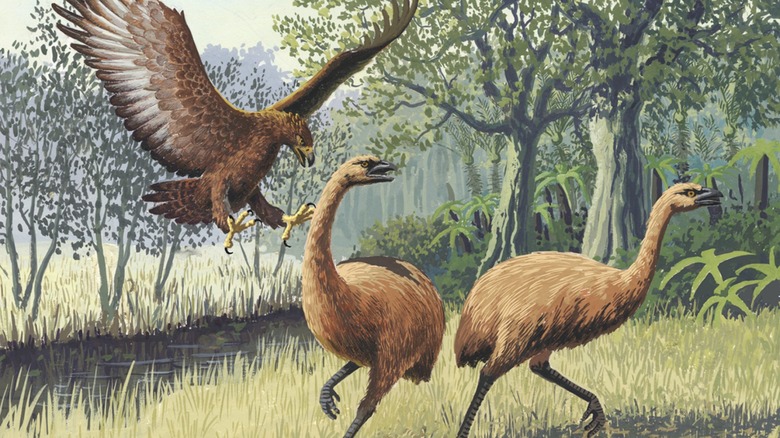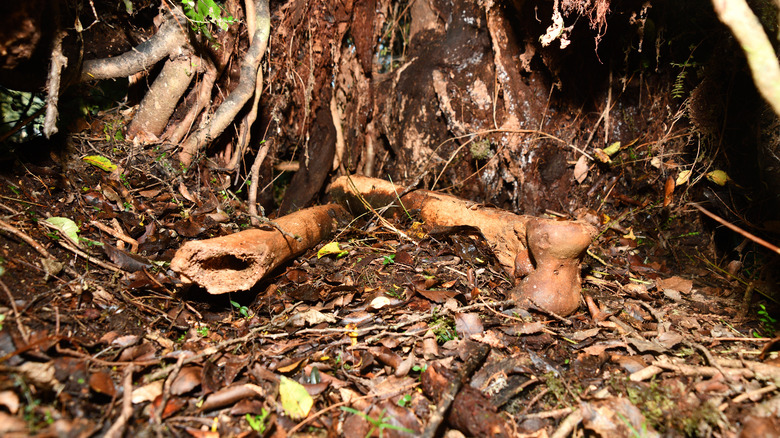The Terrifying Truth About The Extinct Haast's Eagle
The end of the Cretaceous period brought with it a cataclysmic extinction event that devastated almost 80% of all species on earth (via Britannica). While surprisingly not the worst extinction event, it nevertheless wiped or nearly wiped many groups from existence. The most commonly cited victims of this disaster are the dinosaurs, who after over 170 million years of dominance were reduced to just a handful of bird species. While these survivors went on to take the skies from the now-extinct pterosaurs (a niche they dominate to this day), they don't typically stir the imagination as much as their giant ancestors do.
It can therefore come as a surprise to people that birds have on several occasions taken on giant body plans as well. This includes animals like the phorusrhacids (often called terror birds) of South America — towering carnivores who may have used their heads as giant axes to subdue prey (via National Geographic). These animals went extinct around 2 million years ago, long before humans reached the continent, but there was another terrifying bird that for a time may have had people on its menu.
The Haast's eagle may have hunted early Maori settlers
For millions of years, New Zealand was almost totally devoid of mammals, giving birds on the islands room to occupy various ecological niches. For instance, the Moa grew to heights of 12 feet as it strode in search of vegetation (via NBC). Unlike large animals elsewhere in the world, the Moa didn't need to worry about danger on the ground until humans, as its main threat was a flighted bird. The Haast's eagle was a giant bird of prey believed to have weighed over 33 pounds (via All That's Interesting). It used its mass to kill the large herbivores, sinking its long talons into the Moa's pelvic bones after diving at high speeds.
The arrival of the Maori in the 1300s was the beginning of the end for both species, as the colonists hunted the Moa to extinction by the following century. The Haast's eagle was left to starve as a result, but in the meantime, it had all the adaptions necessary stave off hunger by hunting people (via SciTechDaily). Since Maori legends recount giant carnivorous birds that terrorized their ancestors, it is entirely possible that these giant dinosaur descendants pounced on humans as little as 500 years ago (via ABC).

